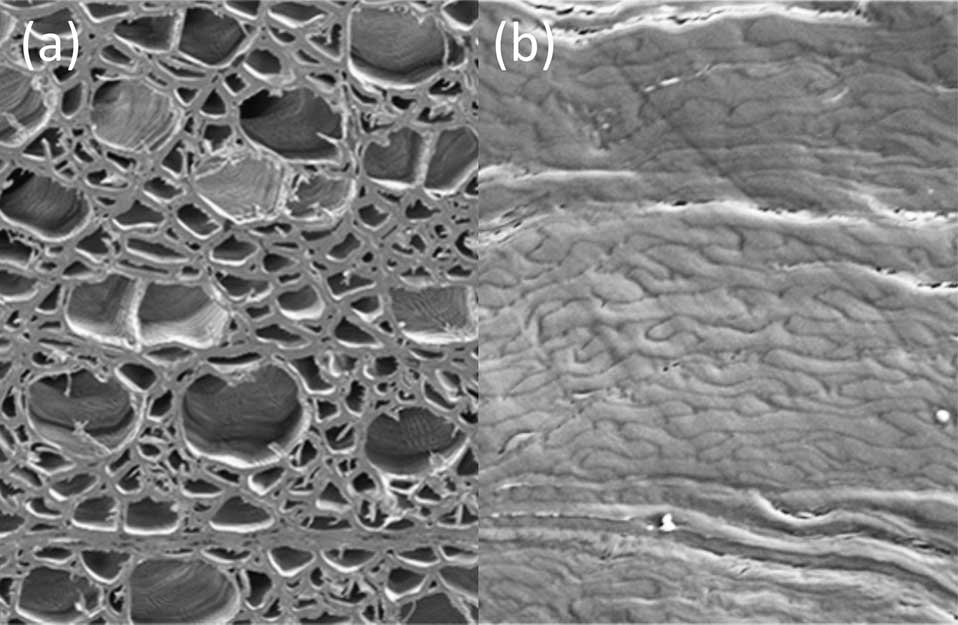Synthetic structural materials with exceptional mechanical performance suffer from either large weight and adverse environmental impact (for example, steel and alloys) or complex manufacturing processes and therefore high cost (for example, polymer-based biomimetic composites). Recently a large multi-disciplinary team led by Teng Li and Liangbing Hu at the University of Maryland, College Park, demonstrated a relatively simple method for processing natural wood into densified wood that has remarkable structural characteristics [1]. This is a two-step process that first involves a chemical treatment with sodium hydroxide and sodium sulfite. This treatment partially removed two components of the cell walls, lignin and hemicellulose, but did not appreciably remove cellulose. The second step was mechanical pressing at 100° C, which leads to a reduction in thickness of the wood by about 80%.
Scanning electron microscopy (SEM) of natural wood reveals many lumina (tubular channels 20–80 μm in diameter) oriented along the direction of wood growth (Figure 1a). SEM of densified wood showed fully collapsed lumina (Figure 1b). The open spaces between the cell walls in natural wood are completely eliminated resulting in a unique laminated structure with cell walls tightly intertwined with each other. The densely packed and intertwined wood cell walls in the densified wood at the microscale level led to a high degree of alignment of cellulose nanofibers and therefore drastically increased the interfacial area among nanofibers. At the molecular level, owing to the many hydroxyl groups in cellulose molecular chains, relative sliding among densely packed wood cell walls involves an enormous number of repeating events of hydrogen-bond formation, breaking and reformation, which is probably responsible for the enhanced properties of the densified wood.

Figure 1 (a) SEM image of the cross section of natural basswood perpendicular to tree growth direction. (b) SEM image of the cross section of densified basswood (super wood) perpendicular to tree growth direction.
Specific tensile strength of the densified wood was about twice that of high-specific-strength steel, lightweight titanium alloy, and other structural materials. Song et al. performed many different mechanical tests that demonstrated densified wood had many-fold superior strength and toughness compared to natural wood. They tested several species of hardwoods and softwoods and found similar enhancements in the mechanical properties of all of them.
To specifically examine the potential for using densified wood in body armor, Song et al. performed ballistic tests on natural wood, a single layer of densified wood and a five-layered laminate of densified wood with alternating the grain direction by 90° between each layer. The ballistic resistance of the densified wood was much higher than natural wood and even higher in the laminate. These strong and tough yet lightweight densified woods are promising materials for low-cost body armor and ballistic energy absorption. Indeed, densified wood has great promise as a high-performance structural material. It will be interesting to see how this processing method will be applied in the future to low-cost and renewable wood! Inventwood, a spin-off company at the University of Maryland, is working on commercialization of this technology.




